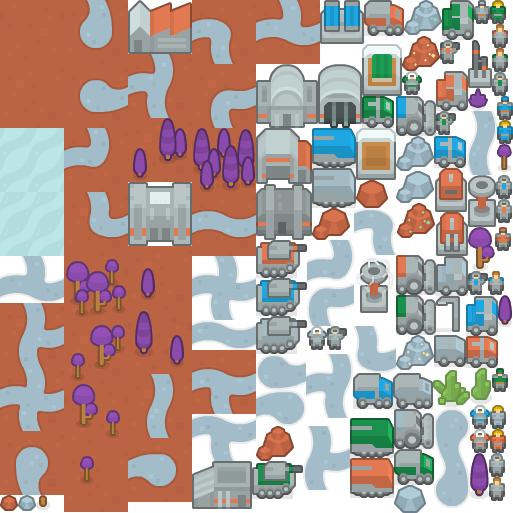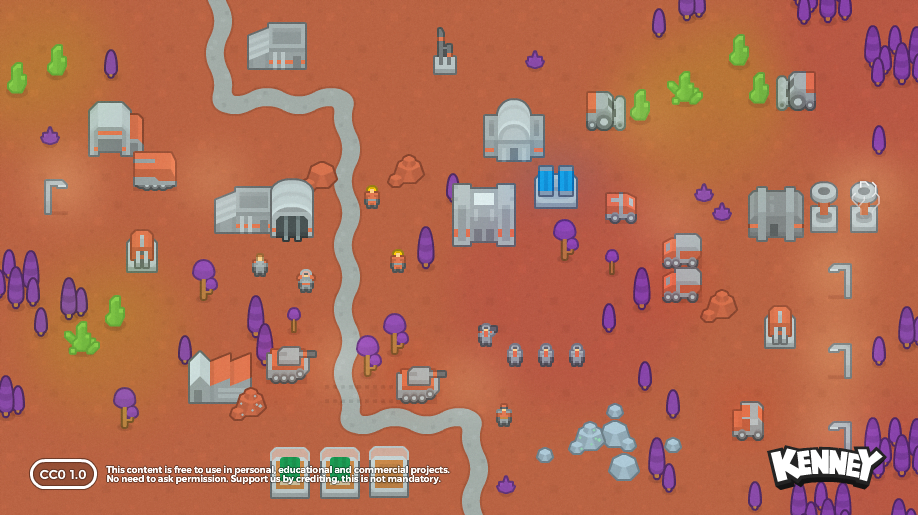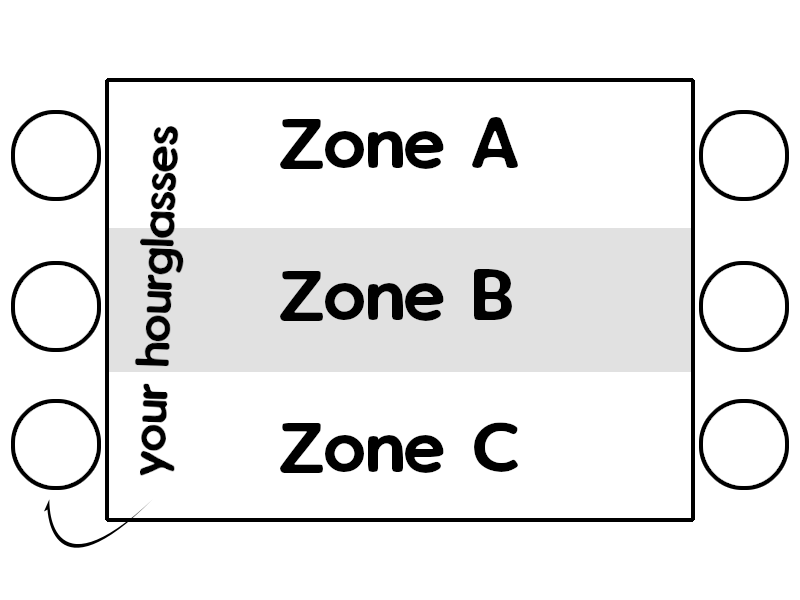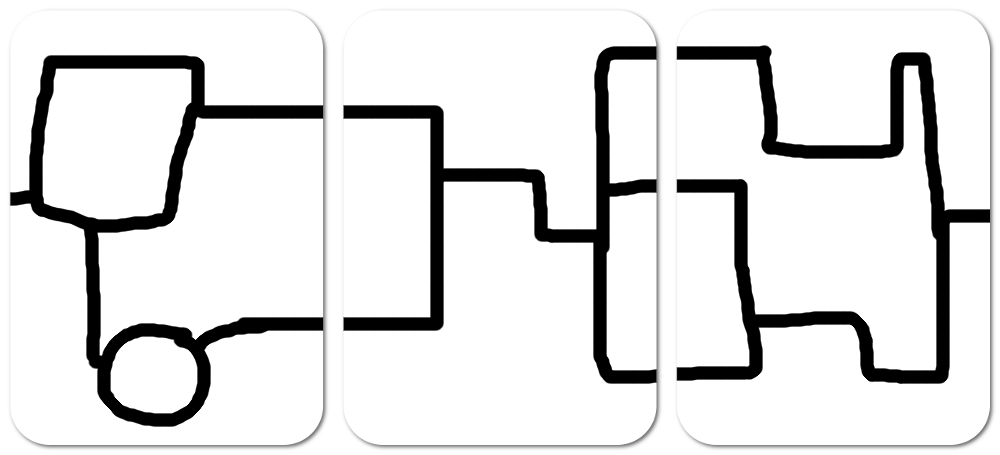As a matter of practice, it’s important to me that I keep demonstrating different ways to engage with games. Making games is a practice, and when you can look at game assets and consider ways to apply them, you’ll begin to see how much of game design is stuff you can do. Therefore, on this blog I’m making it a project to regularly grab some game assets I couldn’t make myself, that are made for game designers to work with, and see what ideas they inspire.
Still no, uh, still no catchier name than that huh?
Oh well.
This time, we’re looking at the endless well of wonderful stuff that is Kenney Assets, focusing on the ‘Sci-Fi RTS’ bundle.
This is a collection of sprites made by Kenney assets. Kenney assets, first of all, are just excellent assets; they’re high quality, they’re consistently freely available, and they have a shared, overlapping aesthetic. If you want to make a game and you haven’t got a strict look already in mind, you should absolutely head to check out the sets of Kenney assets available, and you may be able to find something you want.
I want to make this exercise not about using lots of different Kenney sets (though, you know, I could). There’s a lot of them and if you wanted to you could make a lot of them work together, even with modest editing, recolouring and rescaling. That’s a good idea if you have an ambitious project where you’re going to need to make a lot of changes.
In this case we’re doing it from the other way around. We’re looking at what the asset offers us and seeing what we can do with it. Here, then, is a pure sprite sheet of all the elements in the set.

This is designed for an RTS, where you have, in basic terms, three categories of needs — environmental elements, structure elements, and agent elements. Your environment is stuff like the trees, the ground, the rocks and the rivers. Your structure elements are the buildings, which aren’t there by default but can be placed (and removed) by player actions. This category is pretty obvious. Then you have your agents, things that move around and attack one another, or things that are placed or removed from the battlefield, often easily, and often able to interact with one another.
Now, these are what those assets designed for in videogame terms, but there’s a bit of difference here. See, in a videogame, assets can be freely moved around on the board, they can have movement that can be interrupted, the whole point of a real time strategy game, and therefore, where they are and how they move has to operate where the units, the entities, can actually do things without direct player engagement.
Okay, what’s this, what can I do with this, what ideas are inspired that I can make out of just these tools.

An obvious option for this to just try and replicate a real-time strategy game on a board game space. Make a battlefield design, put the units on tokens, let them move around the battlefield, have a resolution mechanic and maybe even a dice system. Easy, fine. I don’t find those games particularly engaging normally – it’s a system that videogames tend to handle really well, and they can do things like track individual units’ hit points or histories, and just a lot of stuff that improves the game, invisibly, under the hood, without the player necessarily being the algorithm that tracks it.
Plus, it’s just lots of work. You have to devise a reason for each unit, a reason for each building, you need a fiction that explains why these are the available options and a variety of other sensible options aren’t, and you need those things to be both mechanically engaging with one another and not boring and not immediately solvable.
Also, the more representative a war game is, the more that war game can benefit from things like miniatures, rather than little squatty sprites. That means that I’m probably going to be veering away from a straightforward RTS replicating the genre this asset is meant for.
One idea I do kind of like in this space, though, is a real-time strategy game that relies on playing with that ‘real time’ idea. Imagine a two-player, head to head game, where in order to take actions, you needed something set to ‘active.’ You can’t have it active for too long, or it breaks and, let’s say, you lose the game. While it’s ‘active’ your opponent can’t use it, and you can.
Let’s say then that say, if you want to move your units in Zone A, you need your hourglass to be on your side, but you need to flip it over and put it on the other side to let those units recharge. The strategy becomes then about using your time efficiently – something in A, flip it and move to zone B, then flip it and move back to A. Units can move once per hourglass flip – which means time you spend thinking or doing complicated things is time your opponent is spending planning ahead, and time they get to use.
That’s an idea that requires a fair few bits and doesn’t scale up, but it’s an idea. Plus head to head wargames, eh, I just don’t play a lot of them, I don’t feel confident. The hourglasses may feel more like a gimmick.
It does however make me consider hourglasses as ways to handle buildings producing reinforcements, or maybe even real time handling of things like attack waves. Tower defense is a cool genre, that can get cooperative.
But let’s set aside the plain ‘just be a RTS’ design space.
First, I mistook the water for roads. They could still do the job (for the most part) with a modest colour fixing, which opens up an option. Imagine if you’re trying to construct a working base, like in Galaxy Trucker, but you can’t leave ports open – your base has to be a closed loop, with the roads all matching up. Once you construct a base, it can then operate, and you can have some of these buildings have interactive behaviour.
This becomes more like designing a puzzle, where you have to make sure a number of configurations are even feasible. Remember as well that Galaxy Trucker tiles are square and small, so them being mostly defined by doing one thing and having four potential outputs is part of the design. In this case, it might be better to think in terms of cards that only connect along a single horizontal axis. It asks for less table space, and gives you more room for variance within a group.
I think I might like for a helipad or something on some central card – so that when you start building these little bases, the one thing you always have is a way to transport goods from one central situation to another.
Then it’s a matter of populating a variety of systems that can combine and instead making an economic engine that works broadly. Hell, maybe even those agents can be workers and it creates a worker placement kind of narrative. After all, sure, there are tanks in this sprite map, but there are also minerals and crystals and trucks.
I am fond of making economic engine games, especially ones where you can determine what about a setting of economy and industry should matter. In Fabricators I made an entire game mechanic around how you still had to have some respect for natural spaces and for the wellbeing of your workers, after all.
Finally an option is to make it an asymmetrical stealth game where the RTS elements are used to construct a base, then one player gets to position guards around the place, but that the other player then gets to in a hidden movement way, mark out positions. Every turn, the guards can move, and if they move into position to see the sneaking agent, they can get ’em.
This is to play into the whole RTS genre of characters like ‘Tonya’ who turned whole missions into a kind of different genre. You know, like a RTS game built around a singular hero with special abilities who achieved missions to – hang on I’m going to write some of this down.



